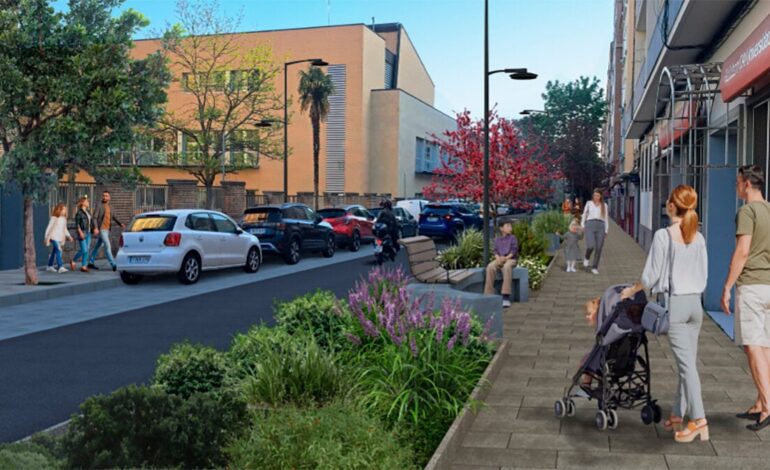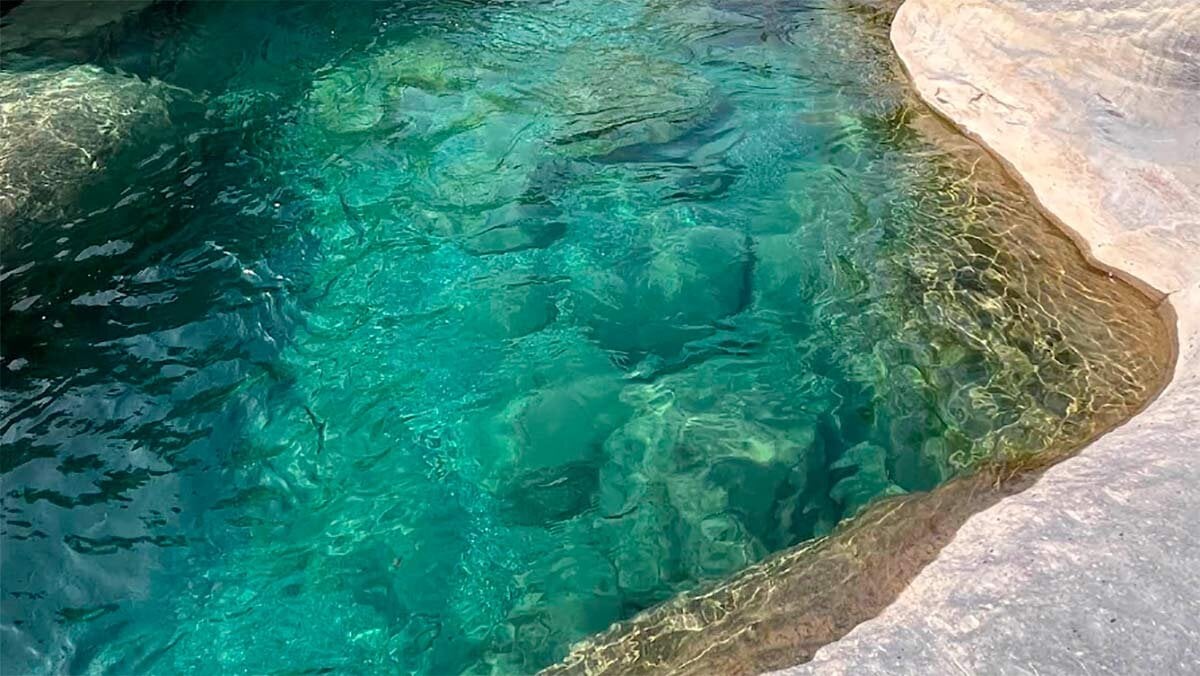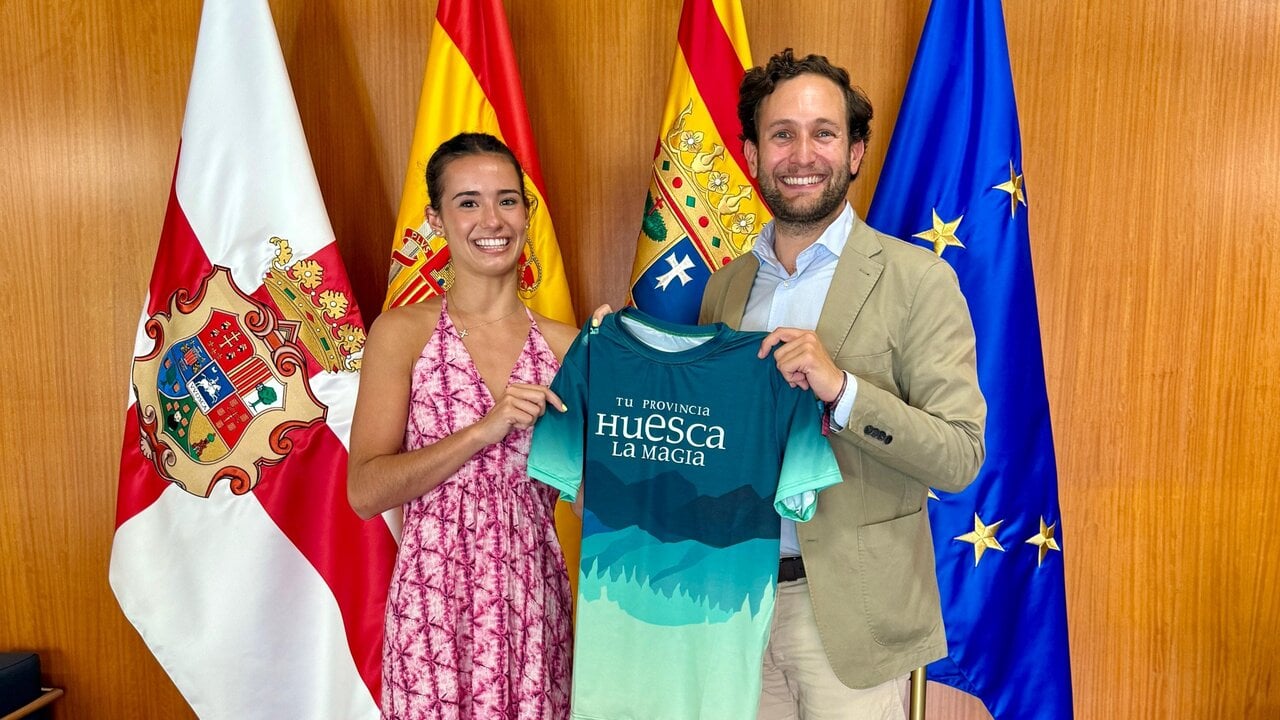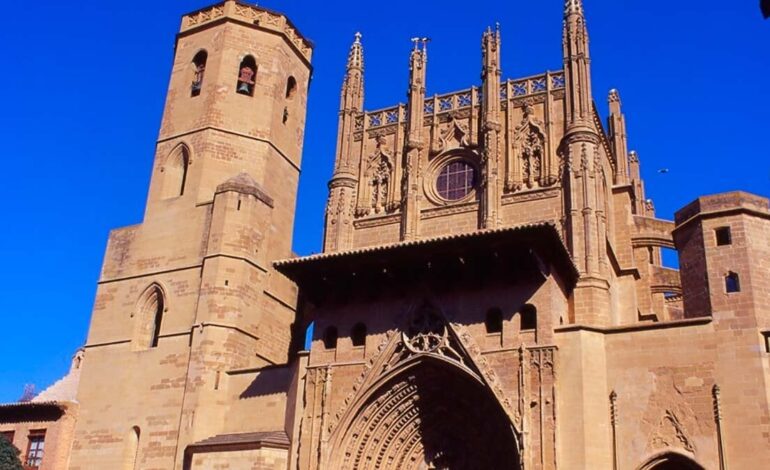
From the stars to basil: the quiet capital of the north that combines culture and celebration at the foot of the Pyrenees
Your neighbors say they live is “world capital“, This city located between two great natural units, is at the limit of the Ebro valley and the outer mountains of the Pyrenees, which gives it a privileged location for both those who seek to enjoy their mountain landscape and their access to the plain.
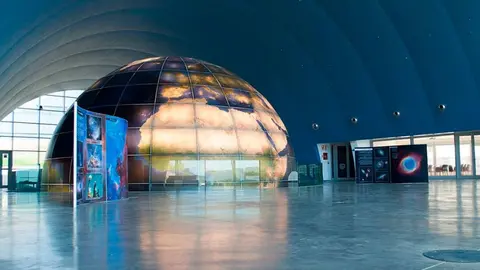
Guided visits to the Planetarium and the Mathematics Museum to celebrate San Jorge in Huesca
What to do and what to do in Huesca
Cathedral of the Assumption of Huesca
Settled on a hill at 488 meters altitude, has historically been a point strategic of defense, which explains its rich medieval heritage and its influence in the region. Throughout the centuries, it has grown and evolved, now being a place full of history, culture and a landscape that mixes the best of the mountain and the plain.
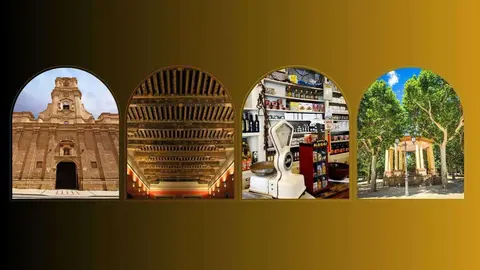
What to see in Huesca Capital: ten places you must visit
Today, Huesca is presented as a hidden jewel between mountains, with a population of more than 54,000 inhabitants who enjoy a quiet city, surrounded by nature and with a rich historical heritage. The closeness of the latest foothills of the Pyrenees results in a unique environment, ideal for those who seek both the peace of nature and the vitality of a city with a lot of cultural offer and events throughout the year.
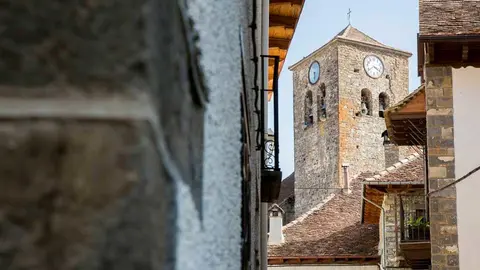
Twelve essential that you have to see in the province of Huesca at least once
What to do and what to do in Huesca
Cathedral of the Assumption of Huesca
The Cathedral of the Assumption of Huesca is one of the main monuments of the city and one of the most outstanding examples of Aragonese Gothic. Built on an old Muslim mosque in the thirteenth century, the cathedral has gone through various reforms over the centuries. Its imposing main facade and its interior house important artistic details, such as the main altarpiece of Damián Forment, which stands out for its great beauty and wealth in sculptural details. This altarpiece, dated in the 16th century, is one of the most prominent in the Renaissance in Aragon.
The interior of the cathedral is also relevant for its impressive central nave and side chapels. In addition, the cathedral is known for its beautiful stained glass windows and the cloister, which presents a Gothic and Renaissance architecture. Through guided tours, tourists can explore both the cathedral and the museum that houses valuable sacred works of art, which makes it an essential stop for lovers of history and religious art.
Guided visits of approximately 1 hour can be reserved, whose price is 4 euros per person, if you go in a group, 3 euros per person and for students or retirees the ticket is 2 euros. The schedule is from Monday to Saturday from 10.30 to 13.30 and from 5 pm to 7 pm and Sundays from 10.30 to 13.30.
Church of San Pedro el Viejo
The Church of San Pedro el Viejo is one of the best examples of the Aragonese Romanesque and one of Huesca’s oldest monuments. Built in the eleventh century, this church is part of a monastic set that includes a cloister and a funeral chapel where the remains of several kings of Aragon rest. The monument is known not only for its architectural beauty, but also for its important historical value, since it was the scene of important events during the Middle Ages.
The Cloister of San Pedro el Viejo is especially striking, with its semicircular arches and its sculpted capitals, which narrate biblical stories and scenes of medieval life. The Church also houses the Royal Pantheon, where several monarchs rest, which gives it a touch of majesty and relevance in the history of the kingdom of Aragon. It is an ideal place for those interested in medieval history and Romanesque art.
Guided visits are available under application, with flexible schedules for groups and tourists. The duration of the visit is approximately 45 minutes. The general entrance is 3 euros per person, if it goes in a group it is reduced to 2.5 per person and the reduced entrance is 1.5 euros. The schedule is from 10.00 to 13.00 and from 16.00 to 19.00, except on Sundays that visits are from 11.00 to 13.00.
Aragon Planetarium
Located only 10 minutes from Huesca, the planetarium of Aragon is a fascinating place to learn about the cosmos and enjoy a unique experience. This science center offers a wide variety of activities related to astronomy, such as night observations, interactive exhibitions and projections in its dome. The planetarium has a modern design and is equipped with four high -power telescopes, which allow observing the stars in great detail.
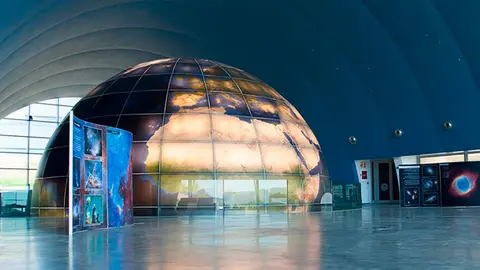

The planetarium of Aragon is a fascinating place to learn about the cosmos
In addition to the observations, the Planetarium of Aragon organizes talks and workshops for all ages, where visitors can learn about space and scientific advances in astronomy. It is the perfect place for an educational and exciting experience, either for fans of science or for those interested in the universe. The visit to the planetarium is an excellent way to complement the tour of Huesca and explore the world beyond our planet.
During this month of July no night observations will be made with a two -hour telescope, at a price of 15 euros:
July 5 from 10:00 p.m. to 24.00h
July 12 from 10:00 p.m. to 24.00h
July 19 from 10:00 p.m. to 24.00h
July 26 from 10:00 p.m. to 24.00h
And for children from 6 years, accompanied by minimum an adult observations will also be made on July 4 from 22.00 to 23.00 hours. With unique entrance: 10 euros.
San Lorenzo parties
The San Lorenzo festivities are one of the most important and expected events of Huesca, declared a National Tourist Interest Party. These holidays, which are held from August 9 to 15, make the city a hotbed of activities, with traditional events such as dances, sports competitions, processions and, of course, enclosures.
On August 9, at 12 pm at noon the chupinazo of the Fiestas de San Lorenzo, which marks the beginning of the city’s festivities is held. The chupinazo shoots from the main balcony of the Consistorial Palace, in the Plaza de la Cathedral and at nightfall, a great bonfire is lit in honor of the employer. This tradition marks the beginning of the festivities, with fireworks that illuminate the city.
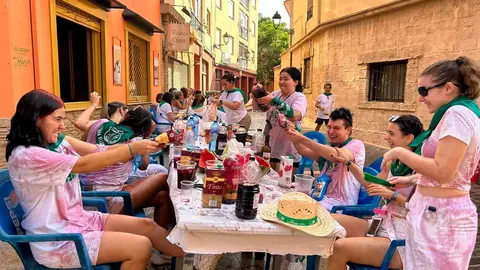
In images.- Huesca dresses in white and green to welcome the festivities of San Lorenzo
You can not go without trying the “San Lorenzo breakfast”, with bread with tomato, olive oil and sausages of the region, accompanied by good coffee or hot chocolate, offered by many of the bars of the city of Oscense. In addition, during the holidays, many restaurants offer special menus with prices between 12 and 20 euros per person, which include traditional dishes and homemade desserts.
The holiday is characterized by an atmosphere of joy and emotion, especially during the traditional floral offering to San Lorenzo and the popular concerts and celebrations that take place throughout the city. The city is dyed white and green, the colors of the holiday, and is filled with life and color for several days.
Huesca Museum
The Huesca Museum is a cultural space that offers a deep vision of the history of the province. Founded in 1835, the Museum houses a wide collection that covers from prehistory to contemporary art. The collections of Romanesque and Gothic art stand out in their rooms, with works of great historical value, such as the sculptures of the Cathedral of Huesca and the altarpiece of the Church of San Pedro el Viejo.
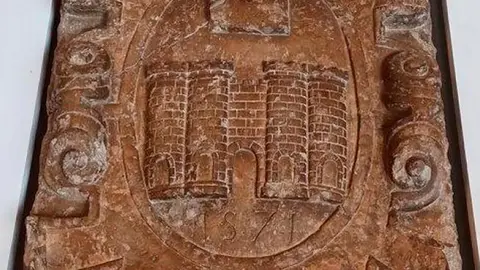
The Huesca Museum renews its permanent exhibition with two shields in the inner courtyard
In addition to the permanent collections, the museum organizes temporary exhibitions that explore art, archeology and ethnography issues. One of the main attractions of the museum is its collection of contemporary art, which includes works by Aragonese painters and sculptors of the twentieth century. Visits to the museum offer an integral vision of Huesca’s history and cultural heritage, being a must for those who want to know more about the city and the region.
Admission is free to children under 18, the reduced is 2.5 euros per person and the general is 5 euros. The schedule is from Monday to Saturday from 10 am to 2 pm and from 5 pm to 20.00 and Sundays from 10.00 to 14.00.
Miguel Servet Park
Miguel Servet Park is Huesca’s main green lung, an ideal recreation and recreation space for both visitors. Opened in 1930, the park was designed by architects Antonio Uceda and Bruno Farina, and has a wide variety of plant species, including native and exotic trees. It is the perfect place to walk, enjoy a picnic or simply relax surrounded by nature.
The park also houses ponds with ducks and swans, which gives it a touch of serenity, and various sculptures spread over its roads. In addition, it has children’s play areas, which makes it an ideal place for families. During the spring and summer months, Miguel Servet Park is filled with life, becoming the perfect place to escape the bustle of the city.
Roldán Salto Mirador
The Roldán Salto is an impressive natural place located about 30 minutes from Huesca, which offers spectacular views of Hoya de Huesca and the Pyrenees. This place, wrapped in legends, is famous for its two gigantic conglomerate towers that rise on the landscape. The viewpoint of the Roldán Salto is the perfect place to enjoy an unmatched panoramic view of the mountains and the surrounding valleys.
According to legend, the Roldán jump is associated with the Cid and its epic jump on the rocks. Today, it is a popular destination for lovers of nature and hiking, since it offers routes that allow exploring this place and discovering its flora and fauna. In addition, the viewpoint has facilities for the enjoyment of visitors, such as rest areas and informative panels about geology and the history of the place.
Art and Nature Center (CDAN)
CDAN is a contemporary art center that has established itself as one of Huesca’s main cultural points. Designed by the architect Rafael Moneo, the CDAN is in a privileged natural environment and is dedicated to artistic research and creation, with a special approach to relations between art and nature. In addition to housing temporary exhibitions of national and international artists, CDANs organizes educational activities and workshops for all audiences.

CDAN is in a privileged natural environment
The center also has a part of the garden that mixes art and nature, offering a unique space to enjoy outdoor artistic facilities. Visitors can travel the center and discover innovative works in their modern building and outside. CDAN has become a reference in the field of contemporary art in Aragon, being an essential place for art and nature lovers.
With free and open entrance from Thursday to Sunday at the following time:
Thursday and Sunday: 11.00 to 1500 hours
Friday and Saturday: 11.00 to 18.00
How to get to Huesca
From Zaragoza
The fastest way to get to Huesca from Zaragoza is by road. Take the A-23 in the southern direction and continue on this highway for approximately 1 hour and 30 minutes. The distance is about 70 km and the access is simple and well marked.
There are also regular bus service that connect both cities, with a duration of about 90 minutes. With prices from 8.5 euros.
From Teruel
From Teruel, Huesca is about 150 km to the north. You can access by car following the N-234 and the A-23. The route lasts about 2 hours and 30 minutes.
There are also trains service between Teruel and Huesca, with an estimated travel time of 4 hours and 25 minutes and if you prefer to go by bus the estimated time is 3 hours and 55 minutes.
Buses and trains prices are around 25 and 50 euros.
From other cities
If you had the idea of getting to Huesca flying, unfortunately it will not be possible, since the Huesca-Pirineos airport does not operate regular commercial flights. The closest option to fly is Zaragoza airport, just one hour by car from Huesca, where you will find national and international flights. From there, you can continue your journey by car, train or bus until you reach your destination.


